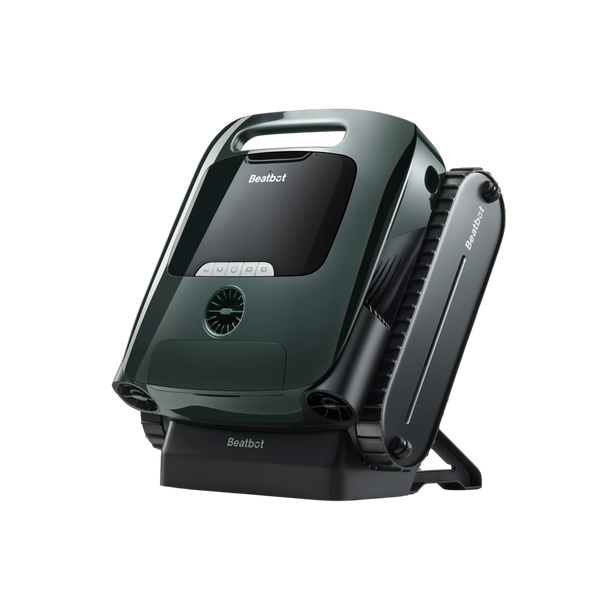What are the Causes and Cures for Milky Pool Water
Ready to dive in but your pool looks more like a glass of milk? Nothing ruins pool plans faster than cloudy water. While common pool problems come and go, this one's particularly frustrating because there's rarely a quick fix.Here's an eye-opener: most pool owners tackle cloudy water all wrong. They dump in chlorine shock, run the filter overnight, and hope for the best. But cloudy pool water signals deeper issues that need real solutions. Our pool experts deal with this problem daily, and we've cracked the code on what really works - minus the trial and error that wastes your time and money.Let's cut through the myths and get your pool back to that crystal-clear blue you're missing.
Table of content

Primary Causes of Cloudy Pool Water
Let's cut through the confusion. Your pool's cloudiness stems from three main troublemakers, and knowing which one you're dealing with makes all the difference. Most pool owners jump straight to chemicals, but that's not always the answer.Dead algae often lurks in cloudy water, floating around like tiny ghosts after a chlorine shock. The particles are too small to see individually, but together they create that milky look you're seeing. Expect this especially after treating a green pool - those algae corpses need time to clear out.Filter problems show up as gradually increasing cloudiness. Think of your filter like a coffee strainer - when it's clogged or running poorly, those tiny particles slip right through. Maybe your pump isn't running long enough, or perhaps the filter media needs replacement. Either way, your water clarity pays the price.
The Chemistry Behind Clear Water
Pool chemistry isn't rocket science, but it demands attention to detail. Skip the jargon - here's what's actually happening in your water.Your pool's pH level controls how well other chemicals work. When pH drifts too high, even proper chlorine levels won't keep your water clear. Think of pH like a traffic cop - when it's not doing its job, everything else goes haywire.Calcium hardness creates its own brand of chaos. Too much calcium turns your water cloudy and leaves scaling on pool surfaces. Too little? Your water gets aggressive and starts eating away at plaster and grout. You need balance here, typically between 200-400 parts per million.Total alkalinity acts like your pool's chemical shock absorber. Without enough alkalinity, your pH bounces all over the place. With too much, you're fighting a constant battle against scale and cloudiness.
Inside Your Filter System
Your filter system does the heavy lifting for clear water, but it needs the right conditions to work properly. Pool pros often spot issues here that owners miss completely.The pump must run long enough to cycle all your pool water through the filter at least once daily. Think about it - a 20,000-gallon pool with a pump that moves 2,000 gallons per hour needs ten hours of run time. Running it for just a few hours leaves dead spots where contaminants build up.Sand filters need backwashing when pressure rises 8-10 PSI above normal. Cartridge filters need cleaning when you notice weak return flow. DE filters might need a fresh coat of powder. Skip these maintenance steps, and your water clarity suffers.Dead spots in circulation often hide behind ladder wells or in deep corners. These areas become particle magnets, slowly releasing cloudiness back into your pool. Moving your return jets occasionally helps prevent these problem zones.

Weather Effects on Pool Water
Mother Nature loves messing with your pool water. Summer storms dump more than just rain into your pool. They carry dirt, debris, and loads of contaminants that cloud up your water fast. But here's something most pool owners miss - it's not just the obvious debris causing problems.Those scorching sunny days? They're silently destroying your chlorine levels. UV rays blast through sanitizer faster than most people realize. A pool that tests perfect in the morning might be struggling by sunset. Install a sunscreen for your pool - cyanuric acid - to slow this process down.High winds stir up another kind of trouble. They don't just dump leaves in your pool - they kick up fine dust and pollutants that bypass your skimmer entirely. These tiny particles create that frustrating haze that won't quite clear up.
Testing and Diagnosis: Get It Right the First Time
Start with Proper Testing
Grab your test kit - but hold up a second. Those test strips sitting in your hot garage since last season? Throw them out. Heat and humidity wreck test strips, giving you false readings that lead to wrong treatments.Fresh testing supplies tell the real story. Dip that strip or pull that water sample when your pump's been running for at least an hour. Test in daylight, not under artificial light that skews color matching. And please - don't stick your hand in the water before testing. Those sunscreen oils on your hands can throw off readings.
Reading Between the Lines
Your test results paint a picture - you just need to know what you're looking at. Cloudy water with high pH and low chlorine? That's different from cloudy water with normal pH and high chlorine. Each combination points to specific problems and solutions.
Your Clear Water Action Plan
Immediate Steps
Kill the pool party plans - nobody should swim in cloudy water. Not only is it uninviting, but it's also potentially unsafe. You can't see someone struggling at the bottom of a cloudy pool.First up, check your filter pressure and pump operation. A quick backwash might solve your problems faster than any chemical treatment. Clean out those skimmer and pump baskets while you're at it.
Chemical Corrections
Work your water chemistry in order. Start with pH - get that between 7.2 and 7.6 before you do anything else. Then tackle alkalinity, aiming for 80-120 ppm. Shocking the pool comes last, not first. And be patient - clear water takes time, sometimes 24-48 hours after treatment.Remember to run your filter continuously during treatment. Those tiny particles causing cloudiness need time to get caught in your filter. Cutting pump time now just prolongs the problem.
Prevention: Smart Moves for Crystal Clear Water
Ever notice how pool pros rarely deal with cloudy water? They're not lucky - they're strategic. Regular maintenance puts you ahead of problems instead of chasing fixes. Run your pump during off-peak hours to save on power bills while keeping water moving. A pool cover blocks debris and slows chemical loss, but don't leave it on 24/7 - your pool needs to breathe.Check your filter pressure weekly. Write it down. This simple habit spots problems before your water turns milky. Replace filter media on schedule, not just when things go wrong. Clean skimmer baskets before they fill up completely.
Professional Help: When to Make the Call
Look, some pool problems need expert hands. If you've followed every step and your water still looks like milk after three days, it's time to call in backup. Same goes for:
- Pressure gauges showing weird readings
- Pump making new noises
- Water that shifts between clear and cloudy repeatedly
- Chemical levels that won't stabilize
Pool service might cost more than DIY, but it's cheaper than replacing equipment you've damaged trying to fix complex problems.

Long-term Pool Health
Your pool's an investment. Treat it like one. Build a maintenance schedule that works for your life - but stick to it. Stock up on chemicals during off-season sales. Keep fresh testing supplies handy.Most importantly, don't ignore small changes in water clarity. That slight haze you notice today could be tomorrow's full-blown cloudy crisis. Quick action keeps small issues from becoming big headaches.
The Bottom Line
Crystal clear pool water isn't magic - it's science and consistency. You've got the knowledge now to tackle cloudy water problems and prevent them from coming back. Remember:
- Test regularly with fresh supplies
- Fix problems fast, following the right order
- Maintain equipment before it fails
- Know when to call for help
Your pool should be a source of relaxation, not stress. Keep these tips in your back pocket, and you'll spend more time swimming and less time troubleshooting.Want more pool care tips? Bookmark our maintenance guide for year-round advice on keeping your pool in perfect shape.
Relative Blogs
About the author



















